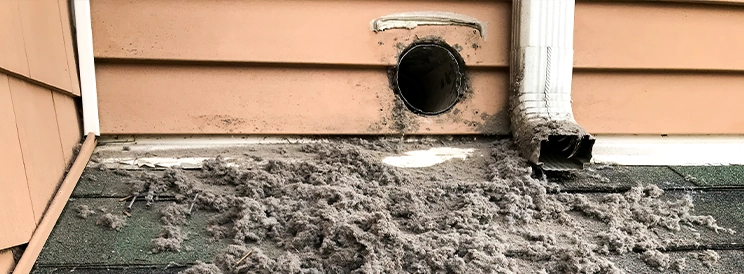Dryer Vent Wizard technicians have the knowledge needed to safely remove nests and debris while also considering unseen hazards left behind. Wherever an animal nest or source of potentially harmful bacteria is found, our technicians will administer our professional dryer vent line sanitization.
Why Do Vents Need to be Sanitized?
Cleaning a dryer vent is more than just removing lint and debris. Like any other surface in your home, bacteria, viruses, and fungi can find their way into dryer vents and spread. This is especially true in cases when animals have nested in the vent system. Bird and rodent nests are often found in dryer vents during the cleaning process, and on top of being fire hazards, obstructing airflow, and collecting other debris, they can contain harmful bacteria.
To keep your vent system clean and free of fungi, bacteria, and viruses in the future, our technicians can also install pest-proof vent covers at all termination points in the line.
General FAQs
Is dryer vent line sanitization necessary after every cleaning?
Not necessarily. Routine cleaning (typically annually) is crucial for removing lint buildup, the primary fire hazard. Sanitization, on the other hand, can be done periodically (every few cleanings) or if you suspect harmful bacteria or hazards.
What methods are used for dryer vent line sanitization?
Professional companies typically employ various sanitizing methods depending on the situation. Some common methods include antimicrobial sprays, specialized sanitizing brushes and high-powered vacuums.
Can I sanitize my dryer vent lines myself?
While DIY options might exist, professional sanitization offers several advantages. Professionals have the expertise, equipment, and appropriate sanitizing solutions to ensure a safe and effective clean.
To learn more about our dryer vent line sanitization service, call us today or request an appointment to schedule service now.

